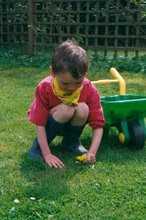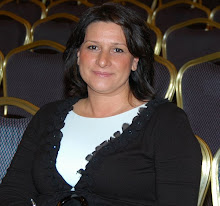 After I put up my previous posting about green roofs I went to our local farm shop to gather some locally grown vegetables for my Sunday lunch and to take a nice walk in the forest.
After I put up my previous posting about green roofs I went to our local farm shop to gather some locally grown vegetables for my Sunday lunch and to take a nice walk in the forest.These walks help me to relax, to ground me, help me to contemplate on my projects and they also give me inspirations. The sky was clear; the forest was glowing with all the beautiful colours of the autumn.
During the walk a gentle thought form entered my heart from the past. I remembered when I was invited to the home of Professor Alexander Russell in London. I was introduced to him at the Hornsey Centre for Conductive Education where he worked closely with Ester Cotton. He took me to his study because he wanted to show me a model of the idea of a building he had planned with others for a children centre to be built in Jerusalem. In the middle of the room there was a huge table with the model of the building. The building looked like a beehive. If I wanted to show you the design it looked similar to Buckminster Fuller’s Geodesic dome…these dome shapes were somehow connected to one another. He was so excited about it and he spent a long time explaining to me where each services will be located.
I don’t know whether this project ever came to fruition or not, but he writes about the concept in the book titled The Petö System and its Evolution in Britain.
He wrote the following: “Our holistic priority goes beyond excellence in overcoming or alleviating weakness or defects towards a progressive fostering of strengths or talent of the “ whole” child, whilst optimally integrating him with his normal peers as soon as is practicable. Ultimate realisation of his full potential must remain the ongoing target from the outset. The extensive floor is designed for integrative classes of handicapped with non handicapped infants and toddlers, starting from one and a half years of age, and extending within its opposite wing for ages three and a half to seven….”
Page 353. 6.A comprehensive Integration Floor
If you are contemplating on designing your new centre you might find some inspiration from this posting.
 Geodesic Dome
Geodesic DomeProfessor Alexander Russell
"Paediatrician who published the first descriptions of many metabolic and neurodegenerative diseases
Alexander Russell, emeritus professor of paediatrics and childcare Hebrew University of Jerusalem (b Newcastle upon Tyne 1914; q Durham 1936), died from heart failure resulting from ischaemic heart disease on 4 March 2003.
Professor Alex Russell had three outstanding strands to his career and a single one of them could have marked him as a distinguished contributor to the science and practice of medicine. He was house physician to Professor Sir James Spence, from whom he acquired the hallmarks of rigour in scientific research and care of the sick child by supporting the family. During his war service in the Royal Air Force he defined the syndrome of carbon monoxide poisoning in the gun cockpits at the rear of Whitley bombers, where space was confined. He showed that the poisoning accounted for air sickness that had previously been ascribed to "weakness of moral fibre" in veteran gunners. For this discovery and his field research in malaria and hepatitis he was mentioned twice in dispatches and was awarded the OBE.
In 1950 he became assistant to Professor Sir Alan Moncrieff, working at both the Hospital for Sick Children, Great Ormond Street, and the Queen Elizabeth Hospital, Hackney Road, where he founded the UK’s first paediatric endocrine, growth, and metabolic unit in 1951. He was appointed consultant paediatrician at the Queen Elizabeth Hospital for Children in 1954 and during the next 12 years published first descriptions of many metabolic and neurodegenerative diseases. Several of these syndromes are known throughout the world as the Russell syndromes. Alex was the first to describe an inborn enzymatic defect of the urea cycle (hyperammonaemia), which led to descriptions of patients with defects in every step of the cycle. His scientific research did not prevent him from listening to the parents of children with many disabilities and his welcoming smile, gentle voice, and polite manner helped them in their darkest hours.
His appointment to the chair of paediatrics and childcare at the Hadassah-Hebrew University of Jerusalem gave Professor Russell opportunities to continue his previous work as well as influence the provision of heath care to whole populations. He founded and became director of the Jerusalem Community Centre for Child and Family Development and the Children’s Hospital in Ramallah. His extensive clinical experience is reflected in his monumental books The Cerebral Palsy Entities and The Peto System. He continued to write original articles—the last in 2001 on the 4q-syndrome—and to advise colleagues throughout the world long after his official retirement."
http://www.bmj.com/cgi/content/full/326/7399/1149/DC1
Early 1980’s
"Dr. Alexander Russell, a pediatrician working in London and Jerusalem brought Spastic Society publications by Ester Cotton to the USA and presented them to the International College of Pediatrics."
http://www.google.com/search?q=www.conductiveedconsulting.com%2F...%2Fconductive_history.doc&rls=com.microsoft:en-gb:IE-SearchBox&ie=UTF-8&oe=UTF-8&sourceid=ie7
Reference:
The Petö System and its Evolution in Britain Book II.
Philosophy, Principles & Practice
Edited by Alexander Russell & Ester Cotton.
1994 Acorn Fundation Publication
ISBN 1-899091 009
Note: Geodesic dome picture from Google images












4 comments:
Unfortunately, the building Prof. Russel was dreaming of stood unfinished for many years,'a white elephant' with no use because of no budget to finish its construction. However, today it is finished and it is where prof. Feuerstein center is located. It is called 'The Variety Building'.
The architecture is neither inspiring nor attractive, I would even dare saying - ugly!
Thanks Rony.
So his vision actually materialised… even if it is not the most desirable and pleasurable visual experience for you.
On the table it looked like a utopian building complex from a science fiction book or from the 22nd Century with playgrounds and a lovely garden around it.
It was very interesting and rather unusual.
I guess it inspires you not to have such a design for your project.:)
Judit
I will take a picture of the building one of these days, so you can see that it turned out totally different from Prof. Russel's aspirations...
Anyway, I think that a building that serves children and families should reflect warmth and cosiness and shouldn't look like science fiction...but this is of course a mater of personal taste.
Rony
Rony,
Thank you. It would be great if you could e-mail me the photo so I could put it up as a later posting under the original posting for everyone to see.
I am rather curious myself. I was also introduced to a concept during my recent training to a better version of similar construct, which is apparently much stronger construction than the one Professor Russell was initially planned. I am looking forward to receiving your picture/s.
Thank you again.
Judit
Post a Comment